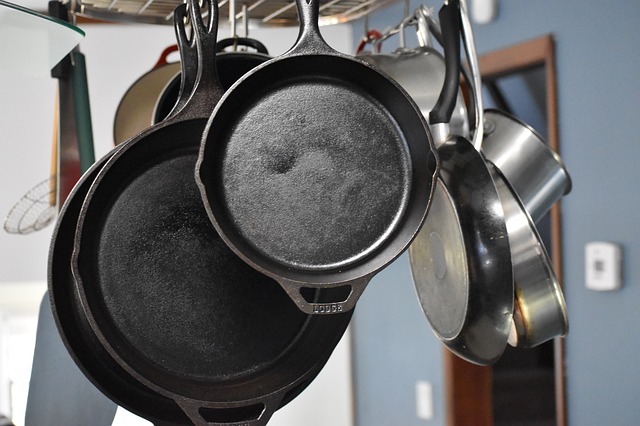Are you considering making the switch to a cast-iron skillet or other cookware? Extremely durable and virtually indestructible, this cookware lasts decades with proper care. But some people may avoid cast iron because they’re not sure how to care for it. Is it hard to clean? Do you have to season it? How do you keep it from rusting?
There is a bit of a learning curve when making the switch. If you are new to the world of cast-iron cooking, it will require getting acquainted with proper care techniques to be successful. Approaches vary between kitchens, but we have some general tips to get you started.
Why Switch to Cast Iron?
Although non-stick cookware is popular because it requires little attention, there are reasons to consider switching to a more durable option. Non-stick coatings can release toxic gases at normal cooking temperatures, contaminating indoor air. And some of the newer non-stick coatings manufacturers have introduced to address this issue also seem plagued with environmental and health issues. Also, non-stick cookware is not durable and should not be used if the coating is scratched. Follow Earth911 tips on how to recycle nonstick pots and pans.

Cast-iron cookware offers many advantages. With proper care, cast iron forms a protective layer that prevents food from sticking without harmful ingredients. Correctly seasoned cast iron cooks foods easily with very little oil. It also gives you the flexibility to start cooking something on the stovetop and finish it up in the oven.
You can even restore rusty pans relatively easily using everyday household products. If you are willing to apply a little elbow grease, it is fine to expand your pot and pan collection with thrift store and garage sale finds.
Cast Iron Do’s and Don’ts
Heat your cookware before baking, frying, or roasting to prevent food from sticking. Cast iron takes a little while to heat up. You can feel if it is warm by placing your hand an inch or two above the bottom of the pan.
Beware that the handle can get hot during and after cooking, making it a burn hazard, so keep your potholders handy.
Wash your cast iron with hot water and use a chainmail scrubber and salt as an abrasive, ideally while the pot is still hot. Don’t use soap or put cast iron in the dishwasher because this will strip away the oils. Also, don’t let pans soak in water because this can eventually cause rust.
Make sure it is completely dry before storing. You can put cast iron on the stove with some heat to make it bone dry. Excess moisture will cause the pan to rust.
Apply a thin layer of oil to the pan using a rag or paper towel prior to storage. Flaxseed oil is the best, but cheaper alternatives like canola and vegetable oil are fine too.
How To Season Cast Iron
It’s a good idea to season new pans and then season all your cast iron a couple of times a year, as needed. Start by preheating the oven to 450 or 500 degrees Fahrenheit. Scrub each pan thoroughly, removing any rust, gunk, or debris on all surfaces, including the bottom and the handles. Apply a thin layer of oil throughout, using a rag or paper towel.
Place the pans upside down in the oven, possibly with something underneath to catch any oil that might drip. Leave the oven on for 1 hour. Turn off the heat but leave the pans in the oven to cool down gradually. If you have time, season your collection a couple more times.
See how to season a cast-iron skillet and get tips for cleaning and cooking on cast iron in the following video from Tasty.
The post How To Care for Cast-Iron Cookware appeared first on Earth 911.








